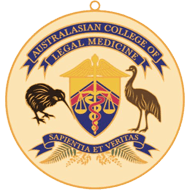Progesterone supplementation for IVF pregnancies and pregnancies at high risk for spontaneous preterm birth
It will not have gone unnoticed by many of you that IVF patients in particular are being treated with progesterone vaginal pessaries as a means of enhancing the process of implantation.
Progesterone is necessary for successful implantation of the embryo. Luteal phase support is therefore a requirement for optimal outcome following egg collection and embryo transfer in an in-vitro fertilization (IVF) cycle It has been shown that ovarian stimulation during IVF treatment, particularly in cycles incorporating GnRHa, leads to an impaired luteal phase with progesterone insufficiency .Furthermore the process of harvesting oocytes can strip granulosa cells from the oocyte-thus reducing the production of endogenous progesterone.
Both human chorionic gonadotrophin (hCG), which stimulates steroid production in the corpus luteum, and progesterone administration in the luteal phase improve the clinical pregnancy rate. However hCG can increase the risk of Ovarian Hyperstimulation Syndrome and so progesterone pessaries are favoured. Vaginal administration of progesterone has shown to be at least as effective as IM administration, and significantly more effective then oral treatment Progesterone support of luteinisation has been used from 2 weeks to 12 weeks of gestation.
Administration of progesterone up to the time clinical pregnancy is detected significantly reduces the rate of subclinical miscarriage, whilst continued administration beyond this time produced no apparent benefit.
The normal progesterone pessaries contain 100 mg of the hormone and are administered vaginally 3 x daily until 12 weeks .
Contraindications to Progesterone R
Some patients may be unsuitable for supplementation with progesterone such as those with liver dysfunction, or conditions worsened by fluid retention such as epilepsy, hypertension, asthma, diabetes, cardiac or renal dysfunction or previous history of venous thromboembolism.
Use of Progesterone Pessaries to Prevent Preterm Labour
Progesterone reduces myometrial sensitivity to oxytocin, blocks adrenergic receptors and prostaglandin synthesis and stimulates lymphocyteassociated synthesis of progesterone induced blocking factor, all of which facilitate uterine quiescence during pregnancy.
Vaginal progesterone therapy is recommended for women who are found to have a short cervix at the time of the routine midtrimester scan. Current evidence suggests that progesterone reduces the risk of preterm birth in these women, with evidence of improved perinatal outcomes. The 2013 Cochrane Review has a general conclusion that vaginal progesterone is of benefit in women with previous history of preterm birth. Currently, vaginal progesterone 100 –200 mg daily is recommended from early pregnancy until 36 weeks gestation.
For patients with a singleton pregnancy and a mid trimester cervical length <25 mm and a previous spontaneous preterm delivery the use of progesterone pessaries was shown in a large metaanalysis to significantly reduce the rate of premature birth at 32 and 35 weeks and their effects ( RR 029-0.68).
Cervical cerclage was equally was effective in reducing preterm deliveries at 37,35,32 and 28 weeks.
| Tags:IVF |








